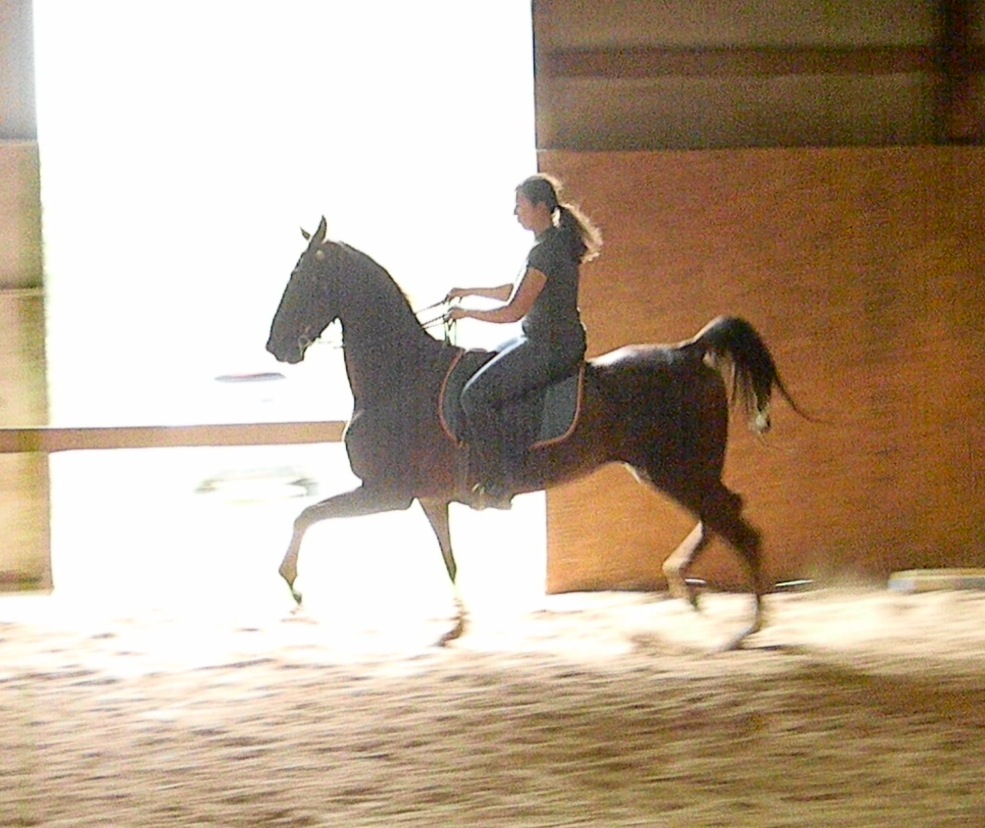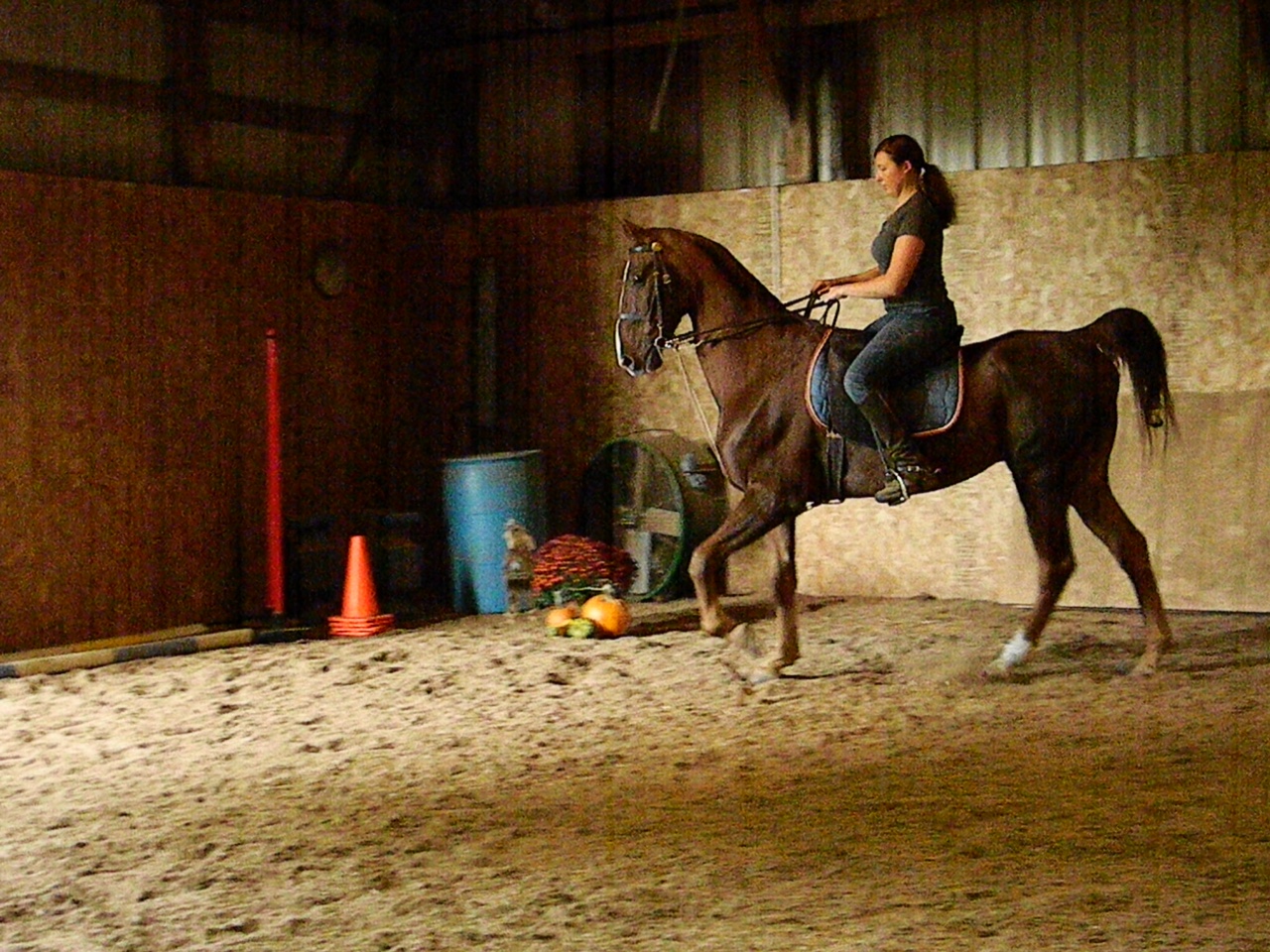Hello everyone! I have been riding Slider four times a week now. I don’t want to go overboard and ride him too much and make him sore. He is still creating muscle mass as I ride him. I do think riding (within reason) builds the most muscle in the shortest amount of time for the horse.
If you think about it, the horse has to balance, carry himself and the rider’s body weight, and if the rider asks, collect himself and drive his hindquarters underneath himself, on top of the separate gaits that require specific muscles. Over the last month I have seen his muscle mass become exponentially better since we have been riding.
He is also much more friendly toward lesson kids who come give treats. The therapeutic riding students at the barn use Frisbees to give their lesson horses treats to avoid finger nibbles or accidents. After a few scary moments of a pink Frisbee being offered to him, a persistent little girl showed Slider that Frisbees mean snacks. He now eagerly awaits lesson kids who have a Frisbee in hand.
The horse also has a terrible candy corn addiction. We may need to take him to some CCA (candy corn anonymous) meetings for it.

With this in mind, I switched from riding one day, to doing a long line lesson with Slider. I used a basic snaffle still; he hasn’t shown me he needs more bit control than that. When I ride him I use a slow twist snaffle, which he seems to like and doesn’t lean on. We warmed up the second way long lining, then I walked him around the arena and we stopped, and backed, to check on his suppleness and if he was paying attention. The halt and back up are crucial. If he won’t stop, and isn’t paying attention, or even obeying cues, how will he be trainable? That’s like kids in school goofing off while the teacher lectures. They don’t learn, and neither does the horse if he isn’t obeying my commands or paying attention.
I have been using dressage techniques that I learned, and so I applied them here during a long line lesson. What’s it going to hurt, anyway?


The next day, after lessons, I squeezed in a quick ride. Several of my mom’s therapy volunteers were there for a therapy meet and greet event, and wanted to see “Erica's horse”. We are hoping to get more people to come ride at the therapy barn. It’s a growing work in progress, for sure! I asked one of our dear volunteers to take a few pictures of my ride (which are what you see here). I warned them the canter wouldn’t be pretty. I had my spurs on, and a crop, just in case he needed canter motivation.
We did our gaits, trotted both ways, and cantered the first way. Then it came time for the right lead canter. I again warned the volunteers it would not be a pleasant depart.
I began to move his hips off the rail and moved my lower leg back. I watched the shoulder as he stepped, and it began to cycle forward. I lifted my rein, just as I did when I was long lining. I followed through with my cue, beginning to lift his shoulder with my rein as I lightly touched my spur to his side.
One slow gait step. Another slow gait step. BOOM. Correct canter lead.
I squealed in delight. I got a lot of laughs from the volunteers. We cantered around a few laps, and I stopped. The picture here where I am hugging him is right after we took that lovely canter. I know we have a ways to go, and that the next ride may not be like that. But we have come a long way, riding and learning my cues. He is starting to learn and understand. This is going to be a fun and rewarding journey.




